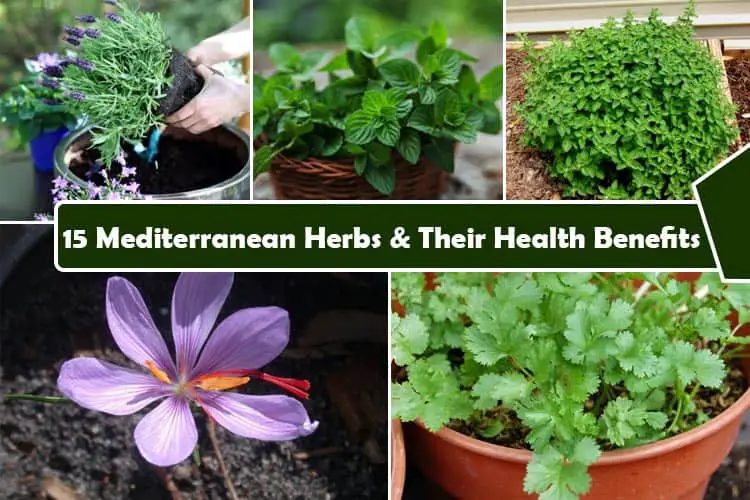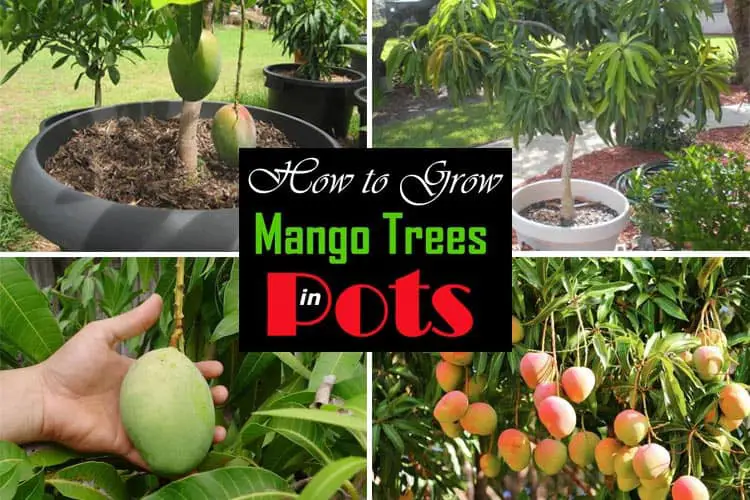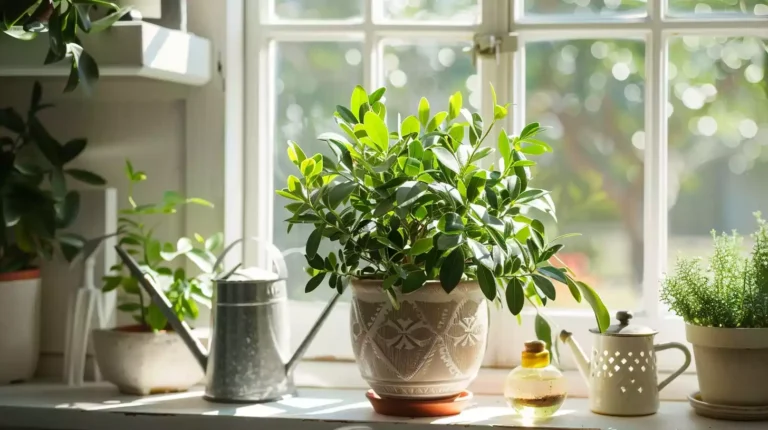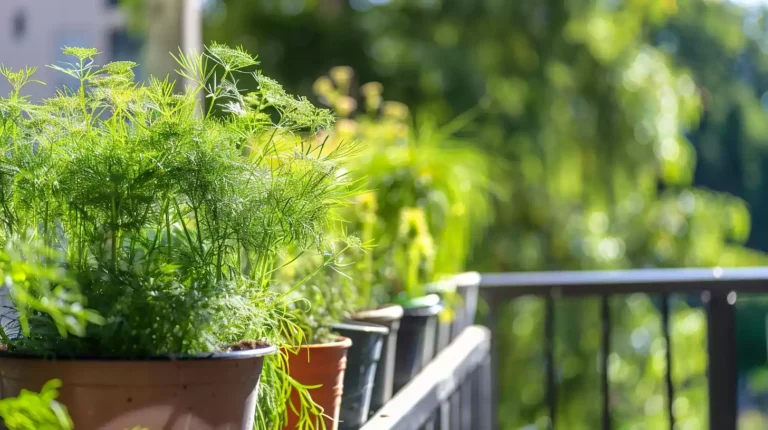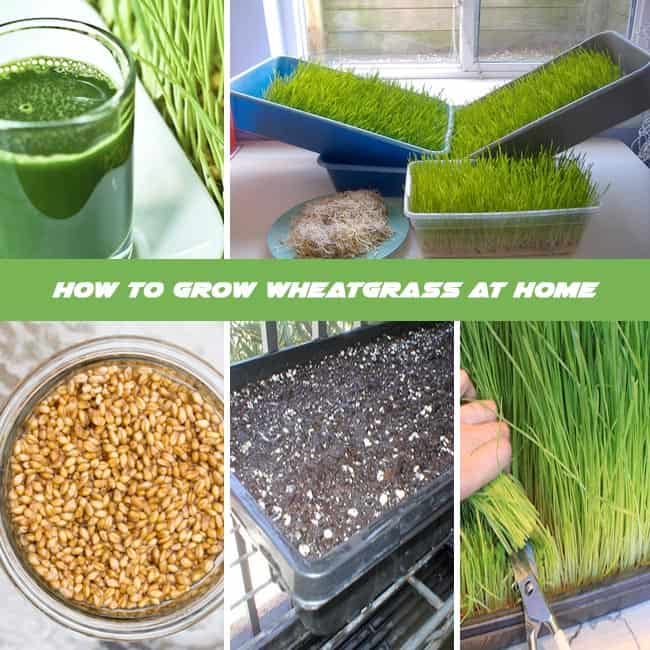Information and Tips for Growing Lemongrass and Using It
Have you been trying to grow lemongrass lately? If so, take help from these amazing tips for growing lemongrass that are enlisted below. Lemongrass is typically known as Cymbopogon citratus, a herb that is used as a seasoning in most Asian foods. This herb works wonders if you consume it in the form of tea and also offers many benefits for the human body.
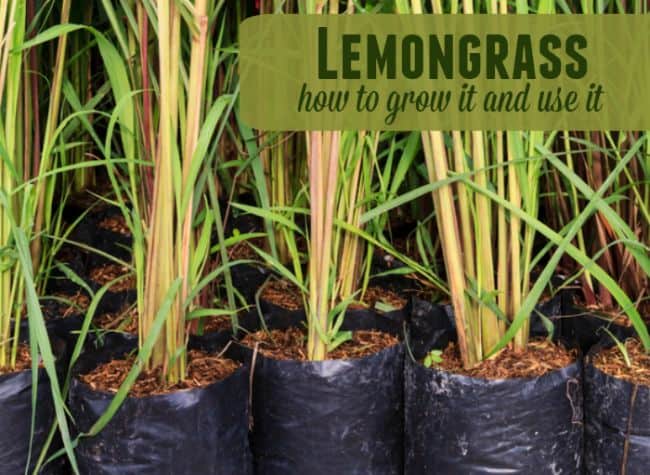
Image Credit: theprairiehomestead
Most often, we find this lemon citrus herb in stores. But, won’t it be better if you knew how to grow this super beneficial herb in your own pots and gardens? Lemongrass can be grown easily, and with a little assistance from us, you can not only cultivate but propagate these as well. Do take a look.
How to grow lemongrass
Lemongrass is easy to grow but one has to know a few tips and precautions before planting this herb in the soil. For growing this herb, you must know what it likes and what it doesn’t. For example, lemongrass grows well in hot weather. It needs moist soil as its a tropical herb. It can grow healthy when out in the sun but its not resistant to frost. Lemongrass can be grown successfully in garden and in pots.

Image Credit: bonnieplants
Tips on growing lemongrass in the garden
1. You can grow this herb in your garden where the space is bigger for it to expand and propagate.
2. If you are planting lemongrass in the soil bed, make sure that it is a fertile soil, preferably loamy. Well drained soil is a must for this herb to grow big and healthy. So in all cases avoid using clay soils that are heavy and can choke the herb.
3. Before you plant a lemongrass seedling, dig a hole filled with mature compost. Compost holds the moisture and nourishes the plant.
Also Read: 25 Small Herb Garden Design Ideas
Tips to grow lemongrass in a pot
A lemongrass plant usually grows to 6 feet and therefore, you need to choose a pot that is large enough to accommodate its growing size. If the pot is too shallow, then this plant might tip when it grows tall. Once you have planted the herb in a pot, make sure to place it in a warm place so as to allow enough sunlight to reach it. If the weather is cold, keep the pot inside but do keep watering for retaining the moisture. Show some artificial light so that the plant doesn’t freeze to death.
If you happen to live in colder regions, then you need to take extra care of these plants. Simply take out the lemongrass plants with roots from the garden bed and plant these in pots after trimming down a few inches. When spring returns, dig up the plants from the pot and replant them in the garden bed. This is a must for preserving these herbs.
Read some tips and don’t forget to follow these:
1. Choose a well drained soil
Since its a tropical herb, lemongrass loves sun rays and thrives full throttle in hot and humid weather. For it to grow and propagate well, you need a well drained soil, like loamy instead of heavy clay soils. Before you plant lemongrass, make sure to fill the holes with mature compost. This will add fertility to the soil, making it hold more water.
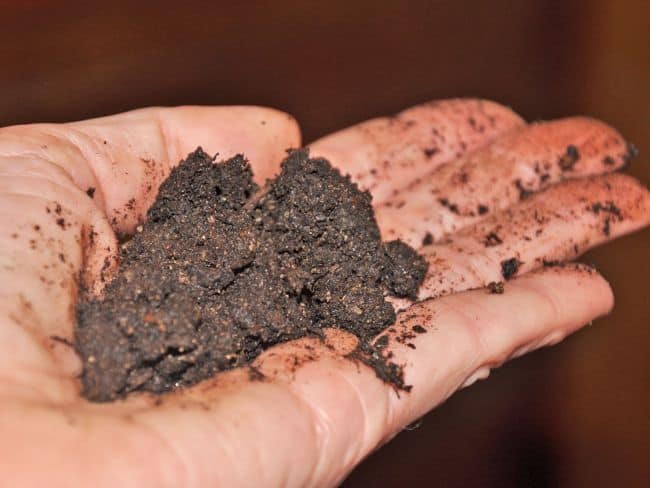
Image Credit: tqn
2. Plant your lemongrass in large pot
Choose a large pot or bucket that is at least 12 inches in width. This is because these herbs propagate and grow to large sizes given the right kind of soil and space. When you fill the pot, choose a well draining potting soil and refrain from using heavy clay soils. This is a tall plant and can easily topple if your pot is small or too clumsy. Also, make sure that the place you have chosen to plant it doesn’t receive too much of wind.
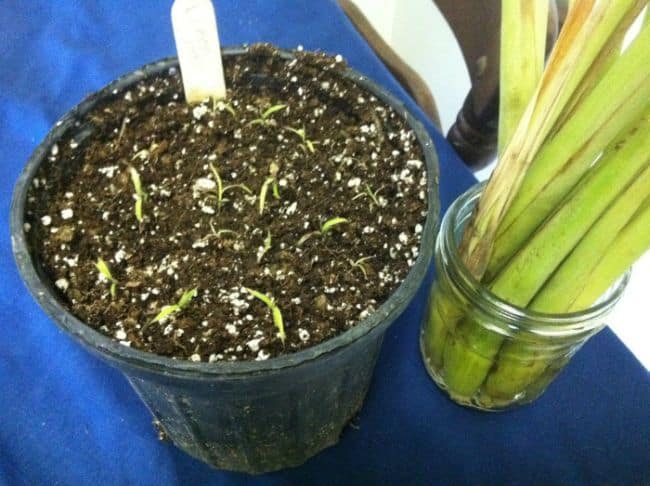
Image Credit: theprairiehomestead
3. Plant with lemongrass root cuttings
This herb grows well when you take root cuttings from fully grown up lemongrass stalks. When choosing which stalk to clip, look for green ones as these are healthy and firm. After clipping off the bottom part of the stalk, place it inside a glass filled with water. Place the glass near a window sill to show sunlight. Wait for at least two weeks after which you can see the roots starting to germinate. Once the sprout appears and grows to 2 inches, take it out of the glass and plant it in the soil.
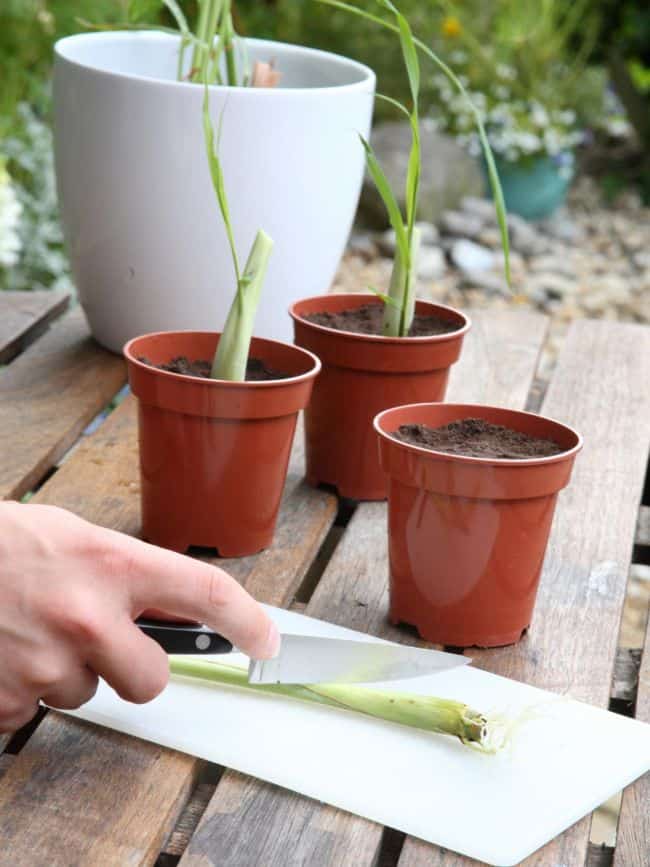
Image Credit: hgtv
If you have more than two sprouts, make sure to plant them at least three feet apart. Planting must be done only in loamy soil as mentioned before.
4. Keep the lemongrass plants moist
Lemongrass plants love moisture and that is why you must always water frequently. In no circumstances should you leave the roots to dry out as this will ruin the plant. Use a spray bottle to water. Don’t worry if you do over watering as these plants are known to tolerate loads of moisture.

Image Credit: arafen
5. Feed the lemongrass plant with nitrogen based fertilizer
Nourishment with fertilizer is a must for lemongrass plants. This herb loves to be nourished with nitrogen, hence use a nitrogen based fertilizer. Fertilize when the plants are growing and this should be done every few weeks. However, if you plant lemongrass together with other plants, do not use too much of nitrogen rich fertilizer as some species of plants cannot tolerate such a type of fertilizer.
Tips on lemongrass care
1. Growing Lemongrass is easy but, like other plants, it requires care. Caring involves frequent watering, fertilizing as well as trimming its roots. During its growth, a lemongrass often forms a hard clump in its roots and this has to be removed. Use a hatchet to do this.
2. Look for signs of insect infestation as these plants do not usually attract pests. However spider mites may attack these herbs.
3. You may sometimes notice that your lemongrass plant is turning brown. It may be the result of less watering. This herb is a tropical plant and loves to be fed with lots of water. Its need for water is much more than other plants and hence you must water frequently. You can use a spray to mist these plants regularly.
4. These herbs can also be affected with fungal diseases like rust infection. An infected lemongrass will have leaves with yellow spots. In order to prevent the spread of infection, you need to fertilize the plants well and also add mulch. Also, if you notice any yellow spotted leaves with darkish brown pustules, trim or remove such leaves. Apply fungicides.
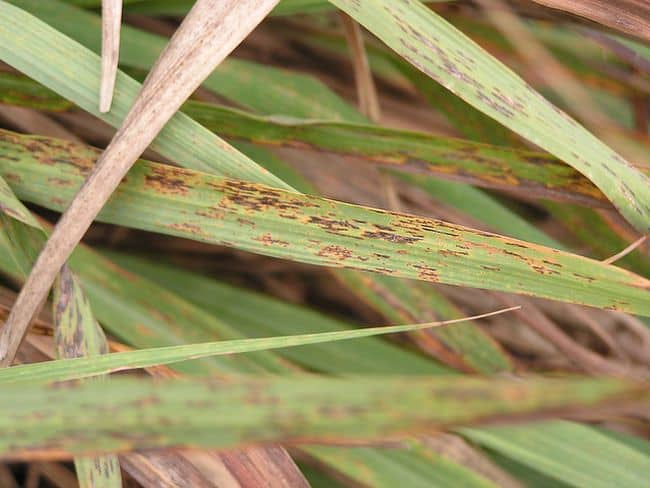
Image Credit: cloudfront
Tips on watering lemongrass
When its growing, a lemongrass plant needs to be watered regularly. However, how much to water depends on the kind of soil you have used for planting it. If its a loam soil, then you don’t need to water the lemongrass frequently. But, if you use sandy soil, then you need to water even more.
Some useful tips in this regard:
1. Take into consideration the time factor
One has to keep in mind that lemongrass should never be allowed to dry as it will spell doom for it. It needs water in ample amounts and humidity in high levels. In case you live in arid or hot regions, water the lemongrass plants every day using a sprayer. However, if you happen to live in rainy regions, then water them frequently after checking their root condition. If you find their roots drying up, then water immediately. Its always better to water either early in the morning or at late afternoon.
2. Watering lemongrass in pots
When you grow lemongrass in pots, the water requirements change. Pots chosen for growing this herb usually come with holes, and therefore, when you water, it tends to evaporate faster than it would in garden bed. Thus, you may have to water frequently so as not to allow its roots from drying up. If you live in colder areas, you can grow lemongrass comfortably in pots. Only, you would have to move these indoors once the weather turns chilly.
Tips on harvesting and storing lemongrass

Image Credit: heidiannie
After you have planted lemongrass and it has grown for you to reap its harvest, you need to bear in mind these tips:
1. Harvesting has to start when lemongrass plant reaches 1 feet in height.
2. Its not only portions of the plant that have to be harvested. You need to harvest the whole stalk. Clip off or slice the whole stalk from the soil level.
3. Be sure to start the harvesting from the outer portion of the lemongrass plant. Clip off stalks that are 1/2 inches in thickness.
4. Never ever make the mistake of using your hands to slice of lemongrass stalks during harvesting.
5. For firm stalks, peel off the outer layer and then use the tender layers for various purposes like adding it in tea or for cooking dishes.
6. The bottom of the lemongrass stalk is edible and is used. Be very careful when cutting off the razor sharp grassy portion at the top as this can hurt you.
7. Lemongrass leaves can also be used when brewing tea.
8. Always store the base of the lemongrass that has been peeled to reveal a whitish part. You can chop it or simply freeze the whole part in the freezer.
Also Read: How to grow Ginger in Pots
Important lemongrass uses
Lemongrass has many uses. Its an essential ingredient in South East Asian cuisine. Most sauces comprise of lemongrass to add a flavorful taste. Many people boil lemongrass leaves just to add a touch of citrus flavor to their soups or brews.

Image Credit: thanhnien
However, apart from cooking, lemongrass has multiple other uses like the ones mentioned below:
1. Plant lemongrass along the borders of your garden for preventing insect infestation
One of the most important lemongrass uses is to border the edges of your garden with this herb. The strong odor is a deterrent for insects as it repels them. Most gardens will have a border planted with this herb for preventing pest invasion inside.
2. Lemongrass can be used as an air freshener
Such strong and aromatic is the fragrance of lemongrass that it can be used as a natural aroma enhancer in rooms and corners of your home. It’s strong smell helps in camouflaging bad smells and spread a soothing odor all around.
3. Use lemongrass on the borders of gardens for preventing erosion
The edges of gardens can be planted with lemongrass if you want the soil around them to stay put and not wash away during monsoons. Lemongrass has roots that clump or grab the soil. Thus, when it rains heavily, the soil around the garden will not wash or erode away if you have lemongrass planted on the edges.
4. Lemongrass is used for preparation of medicinal tea
Another important use of lemongrass is in making or brewing tea for medical reasons. Lemongrass is a herb that’s packed with antioxidants that help in fighting off bacterial diseases. Most people brew tea with the leaves and stalks of lemongrass and then combine ginger to it. Drinking tea infused with lemongrass helps the body to fight off harmful infections.
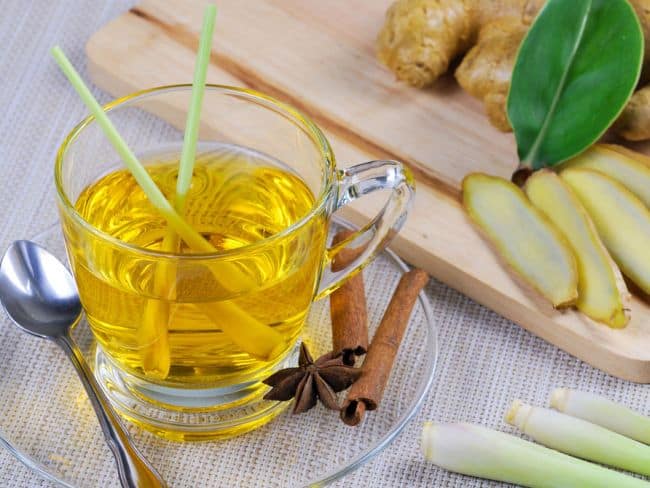
Image Credit: besthealthmag
5. Lemongrass acts as a natural mosquito repellent
If you want to save yourself from getting bitten by mosquitoes, spray lemongrass infused mosquito repellents, or simply plant lemongrass plants all over your garden. The strong fragrance of this herb will repel mosquitoes and will prevent dangerous diseases like malaria. Citronella is an active component present in lemongrass and acts as repellent for bugs.
Final Thoughts
So, now you see how lemongrass is essential for a variety of reasons. There is no need for you to visit stores. You can now plant your very own lemongrass plants inside your homes in pots or in gardens. Just follow these above mentioned tips on growing lemongrass plants and you will see the fruits of your labor in a very short time. Happy planting!

